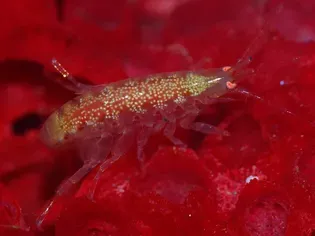The Useful Benefits of Saltwater Copepods and Amphipods
Updated on 04/26/24

Unveiling the Aquatic Marvels: The Vital Role of Copepods and Amphipods in Marine Ecosystems
Introduction
The vast expanse of our planet's oceans teems with a diverse array of marine life, from the majestic whales to the microscopic plankton. Among these tiny organisms, copepods and amphipods play an indispensable role in maintaining the delicate balance of marine ecosystems. These planktonic crustaceans, while often overlooked, serve as the cornerstone of food webs, contributing significantly to the health and productivity of our oceans. In this comprehensive guide, we delve into the fascinating world of saltwater copepods and amphipods, exploring their remarkable benefits and ecological significance. Join us on this captivating journey as we unlock the secrets of these enigmatic creatures.
Copepods: The Tiny Giants of the Aquatic Realm
Copepods, the most abundant metazoans on Earth, are microscopic crustaceans that inhabit all aquatic environments, from the surface waters to the deepest depths of the oceans. These planktonic marvels range in size from a mere 0.5 millimeters to 10 millimeters, featuring a distinctive elongated body with segmented segments and branched antennae. Despite their diminutive size, copepods exert an outsized influence on marine ecosystems, serving as a crucial link in the food chain and contributing to the recycling of nutrients.
Ecological Significance of Copepods
Copepods play a pivotal role in the marine food web, serving as the primary food source for a vast array of marine animals, including fish larvae, jellyfish, sea turtles, and even whales. Their grazing habits contribute to the control of phytoplankton populations, preventing excessive blooms that can disrupt the delicate balance of ecosystems. Moreover, copepods are known to consume harmful algae, effectively reducing the occurrence of toxic algal blooms that can pose a threat to marine life and human health.
Nutritional Powerhouse
Copepods are a nutritional powerhouse, boasting high levels of essential fatty acids, amino acids, and vitamins. Their inclusion in the diet of marine animals enhances their growth, reproduction, and overall health. For humans, copepods have gained recognition as a sustainable and nutrient-rich food source, containing high levels of Omega-3 fatty acids, which are linked to reduced risk of cardiovascular disease, improved brain function, and enhanced immune response.
Role in Nutrient Cycling
Copepods play a crucial role in nutrient cycling within marine ecosystems. Their feeding habits promote the transfer of nutrients from phytoplankton to higher trophic levels, ensuring the efficient utilization of available resources. Additionally, copepods contribute to the production of fecal pellets, which sink to the ocean floor, carrying with them organic matter and nutrients that are essential for benthic communities.
Amphipods: The Versatile Crustaceans of the Marine Realm
Amphipods, another group of crustaceans, are found in a wide range of marine habitats, from sandy shores to deep-sea hydrothermal vents. They exhibit a remarkable diversity in size and shape, with some species measuring up to 30 centimeters in length. Amphipods are scavengers and omnivores, feeding on a variety of organic matter, including algae, detritus, and small invertebrates.
Food Source for Marine Animals
Amphipods serve as an important food source for a variety of marine animals, including fish, seals, whales, and seabirds. Their burrowing behavior enhances the availability of nutrients for other organisms, contributing to the overall productivity of marine ecosystems. Moreover, amphipods play a role in the cycling of nutrients, promoting the breakdown of organic matter and the release of essential elements into the water column.
Bioindicators of Environmental Health
Due to their sensitivity to environmental changes, amphipods are often used as bioindicators of marine water quality. Their abundance and diversity can provide insights into the health of an ecosystem, indicating levels of pollution or habitat degradation. Monitoring amphipod populations can help scientists identify areas of environmental concern and implement measures to protect marine ecosystems.
Aquaculture Applications
Amphipods are gaining popularity in aquaculture as a valuable live feed for fish and shellfish. Their high nutritional value and ability to tolerate a range of environmental conditions make them an ideal food source for farmed aquatic organisms, contributing to their growth and health. Additionally, amphipods enhance water quality in aquaculture systems, reducing the risk of disease outbreaks and promoting overall productivity.
Conclusion
Copepods and amphipods, often overlooked in the vastness of marine life, play an indispensable role in maintaining the health and productivity of our oceans. These planktonic crustaceans serve as a vital food source for a multitude of marine animals, contributing to the balance of food webs and the cycling of nutrients. Their ecological significance extends beyond their trophic connections, as they serve as bioindicators of environmental health and contribute to the overall well-being of marine ecosystems. As we delve deeper into the complexities of marine life, the importance of these enigmatic creatures becomes increasingly apparent, highlighting the need to prioritize their conservation and protection for the benefit of future generations.
Explore More Pets

Freshwater Aquarium Filters
How to Deal With Cloudy Aquarium Water

Saltwater Aquarium Filters
How Do You Remove Chloramines From Tap Water?

Freshwater Aquariums & Habitat
Can I Keep My Koi Fish Inside?

Saltwater Aquariums & Habitat
14 Best Floating Plants for Your Aquarium

Freshwater Fish Health
How to Treat Ich on Freshwater Fish

Saltwater Fish Health
Fin Rot in Aquarium Fish

Freshwater Aquarium Filters
How to Do Aquarium Water Changes

Saltwater Fish Health
How Do Fish Get Parasites?